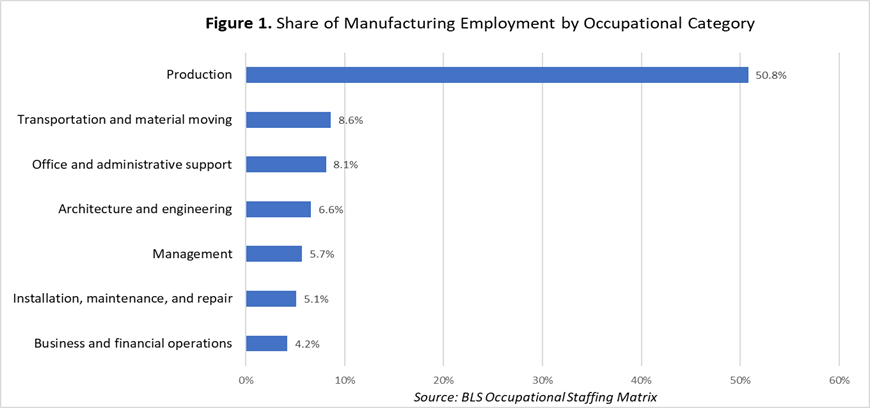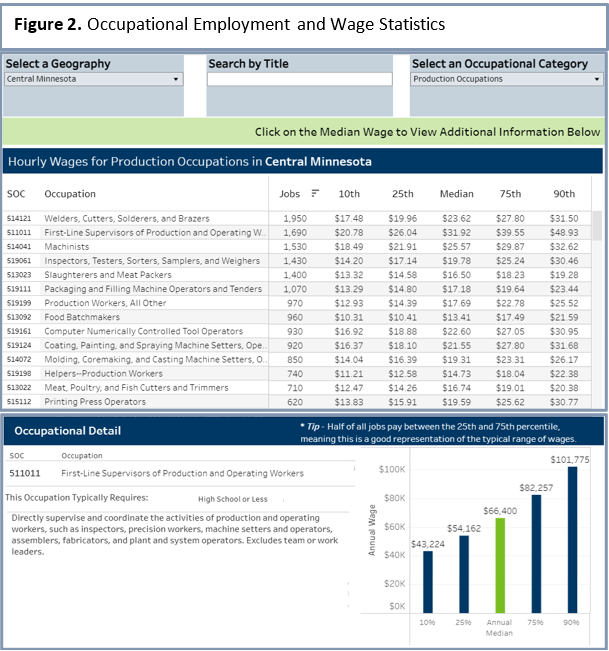 Central Minnesota is a manufacturing stronghold, with several global manufacturing firms operating there.
Central Minnesota is a manufacturing stronghold, with several global manufacturing firms operating there.
The region is especially well known for its expertise in food processing, printing, furniture manufacturing, appliances, machinery and heavy equipment manufacturing.
View our latest blogs on CareerForce. Want the freshest data delivered by email? Subscribe to our regional newsletters.
9/27/2021 9:00:00 AM
Luke Greiner
Manufacturing is Central Minnesota's second largest employing industry, providing nearly 40,000 jobs with an average annual wage of more than $57,500, well above the region's overall average of $48,500. The most recent job vacancy survey reported the second highest amount of Manufacturing job openings in the past 20 years (1,718 Manufacturing vacancies), showing there is a fantastic amount of opportunities for workers looking to find a career in Manufacturing.
With occupations like Packaging & Filling Machine Operators, Metal & Plastics Workers, Assemblers & Fabricators, Other Production Workers, as well as First-Line Supervisors, Manufacturing companies mainly employ workers in production occupations. However, it's important to note that roughly 50% of Manufacturing jobs aren't in production, but are instead in Transportation & Warehousing, Office & Administrative support, Architecture & Engineering, or Management occupations, among a few others (see Figure 1).

Even with such high demand, the barriers to entry into a Manufacturing career are relatively low. Over three-quarters of the openings manufacturers posted in the fourth quarter of 2020 required a high school diploma or less, with employers placing a higher premium on work experience. About half of jobs required at least one year of prior work experience and many employers report that they provide on-the-job training. This is terrific news for new workers as well as workers looking for a career change without having to invest significant time and money into pursuing higher education.
The availability of Manufacturing jobs that can be attained without higher education means high school students and recent graduates are excellent candidates to begin a career in Manufacturing. E employers and school districts can benefit students by 1) increasing awareness of the wide variety of careers at local manufacturers, and 2) by helping high school students gain basic skills to get them started on the right foot.
Student survey results from the 2019 EPIC Career Exploration event illustrate that only 4% of students responded that they were most interested in Manufacturing, even as 11% indicated they were interested in the related STEM cluster. Collaborative employer-education partnerships can help connect the dots for students and make them aware of the many opportunities in Manufacturing.
Retention of existing workers is even more important in the heated labor market Central Minnesota employers are seeing in 2021. After dipping during the Great Recession, turnover rates had been increasing until 2020 with workers enjoying increased job mobility. Then the instability of the pandemic recession caused a brief moment of low overall turnover as employment transitions all but ceased. However, the labor market has since tightened and employer hiring demand is at an all-time high, which will again, in all probability, lead to higher rates of turnover until employer demand decreases.
Of course money isn't everything, but it is one of the biggest driving factors for workers who are shopping for jobs, regardless of their employment status. So it makes sense from a recruitment and retention standpoint for manufacturers to ensure current wage and salary packages are competitive in their region and neighboring regions.
Employers and workers who want to gauge the competitiveness of their compensation package should look at the range of wages for occupations of interest. This Occupational Employment and Wage Statistics dashboard provides regional hourly and annual wage information that helps users determine how competitive wages are for selected occupations. Users can select a geography and then search for a specific occupation to see local wage and employment estimates (see Figure 2).

Manufacturing employment is poised for a healthy increase according to job vacancy survey data, yet employment growth is being curtailed by scarcity of new workers in the labor force. Ensuring wages are competitive is an obvious recruitment strategy, but it's unclear if wages alone will encourage workers on the sideline to try a career in Manufacturing.
Regional and statewide resources for manufacturing employers, educators and students:
Contact Luke Greiner at 320-308-5378.